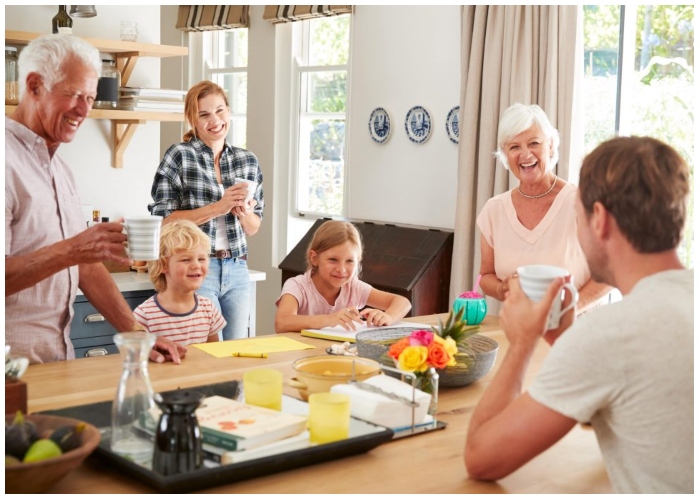In recent years, a quiet shift has been taking place across neighborhoods and cities: families are living together again—under one roof and across generations. What was once a norm in many cultures, then became rare during the rise of individualism and suburban living, is now making a serious comeback. Multi-generational households are growing not just out of necessity, but out of choice, and they’re transforming how we think about home, care, and community.
A Rising Trend in Modern Homes
Did you know that more families are living together in multi-generational households? It’s true! The number of U.S. households with three or more generations under one roof has more than doubled since the 1980s. Why is this happening? Well, it’s a mix of financial, cultural, and lifestyle reasons.
The pandemic played a big role in this trend. Families came together for health, childcare, or financial security during tough times. But what started as a temporary solution for some has turned into a long-term thing. Now, adult children are staying longer with their parents, aging parents are moving in with their adult kids, and grandchildren are being raised in homes where wisdom, love, and responsibilities are shared across all ages.
Financial Security and Shared Expenses
With the cost of living skyrocketing, especially in cities, multi-generational households are a smart way to share expenses. Mortgages, utility bills, groceries, and even streaming services become more bearable when split among more working adults. For families struggling to find a place to live or take care of elderly relatives, the answer is often right in their own homes.
Many families are also combining incomes to buy bigger houses or renovate their homes to fit everyone’s needs. This way, young couples can own their homes and older family members can enjoy a comfortable retirement without having to move away.
Built-In Support Systems
Living with multiple generations can be a real blessing. Imagine having grandparents on hand for childcare when you’re a working parent. And for older folks, having loved ones nearby for support, companionship, and everyday tasks is priceless.
For kids, growing up in a multi-generational home is a chance to learn valuable lessons about patience, respect, and understanding different ages. It’s a way to connect with your roots and learn from your ancestors. It’s a truly enriching experience that can’t be beat.

Designing Homes for Multiple Generations
As this trend grows, so does the need for adaptable home designs. Architects and homebuilders are taking note, creating spaces that balance privacy with shared living. Think in-law suites with separate entrances, finished basements, soundproofed walls, and dual kitchen or laundry areas. Smart home technology also plays a role, helping families manage different schedules and preferences seamlessly.
Even smaller homes are being reimagined with flexible spaces. A dining room may double as a homework station, or a sunroom may be converted into a meditation area for a grandparent. The key is thoughtful design that respects the autonomy of each generation while encouraging connection.
Bridging Generational Gaps
Living with family members of different ages doesn’t come without challenges. Differences in lifestyle, communication styles, and boundaries can lead to misunderstandings. That’s why clear expectations, mutual respect, and open communication are crucial.
Some families hold regular “house meetings” to address responsibilities, set quiet hours, or even just share updates. Creating a balance of shared and private time helps everyone feel respected. While conflicts may arise, they’re often outweighed by the deeper bonds that form when multiple generations share the rhythms of daily life.
A Cultural Shift Back to Connection
In many cultures—particularly Asian, Latin American, and Middle Eastern communities—multi-generational living never went out of style. The value placed on family unity, respect for elders, and communal responsibility has long supported this living arrangement. What’s changing in 2025 is that this way of life is being embraced more widely, across a range of cultural backgrounds and family structures.
The broader cultural shift reflects a growing desire for deeper connection in a world that can often feel isolating. As people reevaluate their priorities—seeking community, meaning, and resilience—multi-generational homes are emerging as a powerful antidote to modern life’s disconnection.
Multi-generational living is a return to values of care, connection, and shared experience, offering strength in togetherness amidst high housing costs and stress.